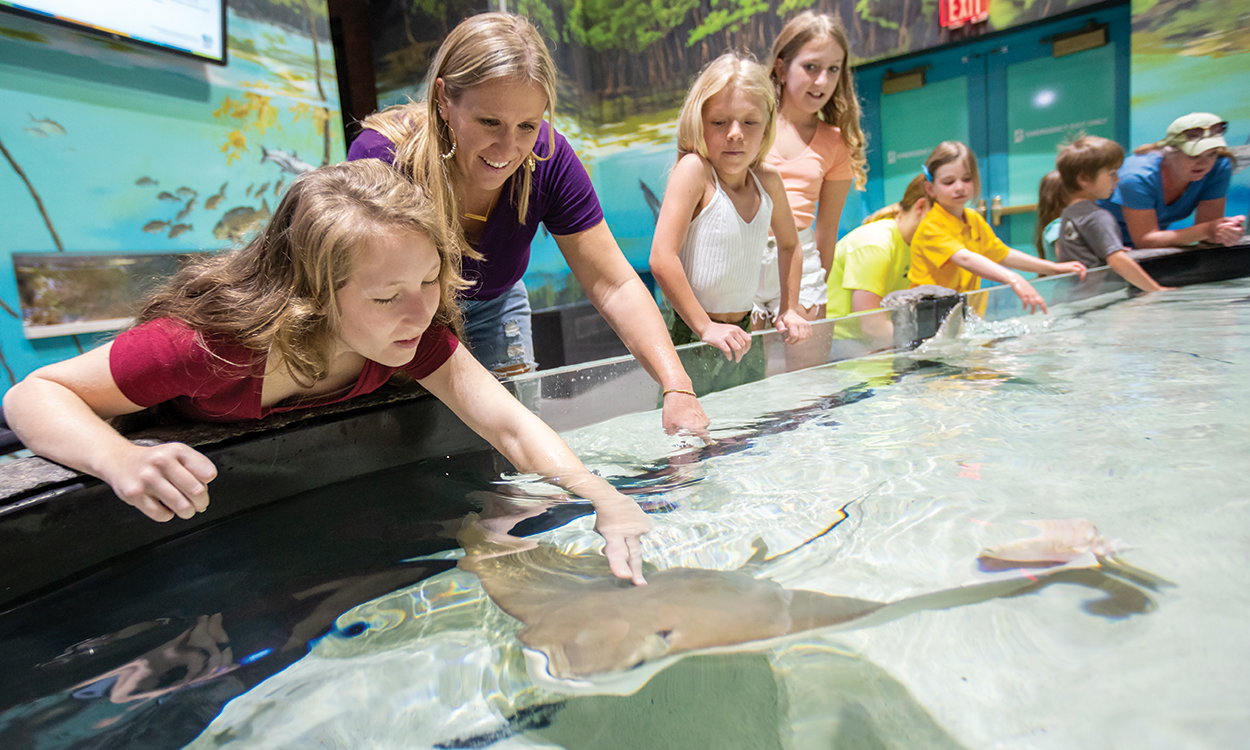Written by Emily Adlfinger, Marketing & Communications Manager, National Mississippi River Museum & Aquarium
On June 28th, 2003, the William Woodward Mississippi River Discovery Center – and what is now fondly known as the National Mississippi River Museum & Aquarium – came to life. Twenty years later, 3.5 million guests have come through the doors and created a community of returning guests, members, and supporters.
In the 1980s, the Fred W. Woodward Upper Mississippi Riverboat Museum helped put Dubuque on the map. Jerry Enzler was the Founder and Executive Director of the museum at the time, and saw potential to grow the facility and expand the impact of the Dubuque County Historical Society. A $2 million gift to the organization from the society’s former board president William “Bill” Woodward in 1995 became the catalyst for the project and the first drop in the bucket for what would become a $188 million effort funded through grants and private donors.
“The most fulfilling part of my professional life, by far, has been leading the creation of more than 100 exhibits and films for the Dubuque County Historical Society museums,” said Enzler in a reflection on his career. “It is through this process that we have created the very essence, the soul, of the museum experience. The result? We have become better stewards of Dubuque and the Mississippi River, and Dubuque and the Mississippi River are better off for it.”
Since opening, the campus has grown to three buildings connected by an expansive outdoor space with aviaries, wetlands, a blacksmith shop, greenhouse, plaza, and boat launch. The national landmark William M. Black, a 1930s steam-dredge floats in the Ice Harbor, providing an on-board experience for guests to immerse themselves in history. River of Innovation, a STEM-centered exploratory exhibit, provided a new dimension to the River Museum’s diverse offerings in 2021. Earlier this year, Rivers to the Sea underwent a complete redesign and interpretative messaging transformation, elevating the guest experience once again.
Though not seen directly by the guests, the River Museum’s education and conservation programming has evolved as well. Guests may notice swarms of school-aged children touring campus during the academic year, which is a testament to the growth of the education department. Reaching more than 10,000 students each year, the River Museum offers outreach programs for the community, camps, and programming, and shifted to incorporate distance learning when onsite programming took a pause in 2020.

In 2007, the facility joined the Association of Zoos and Aquariums’ (AZA) Species Survival Plan to help breed Wyoming Toads – an amphibian federally extinct in 1991 — and has since released more than 50,000 tadpoles and toadlets back to Wyoming. More than a decade later, these conservation efforts have expanded to include freshwater mussels, Laotian newts, and saltwater species like corals. In 2009, the River Museum earned AZA accreditation – the highest standard for zoos and aquariums – and continues to draw national recognition, most recently as host to the Regional Aquatics Workshop, welcoming aquarists from around the world to Dubuque and the facility.
“Over the past twenty years, we’ve added and updated our exhibits and education programs with a focus on history, science, and conservation,” said Kurt Strand, President and CEO. “Our historical and living collections provide important stories that educate and excite our guests. Our staff’s passion for our mission provides visitors with a world-class experience.

“As we look ahead, we will continue to add new immersive experiences while taking great care of our property, animals, exhibits, and collections to continue these educational experiences. It’s an exciting future, and I look forward to it.”
It’s more than a museum, it’s a people place – and that’s clear in the smiling faces and warm welcome from the staff and volunteers when guests come through the door. It’s a destination for people to enjoy, from a daytrip visit to saying “I do” and making memories that will last a lifetime. The historical society has spent more than 40 years building a legacy that showcases the history and cultures of the Mississippi River, and the mission to become the world’s premier interpretive and preservation center for the river’s natural environment and history is far from complete. The River Museum and the stories it tells and impact on the community is representative of that vision.

For more information, visit RiverMuseum.com.




Comment here